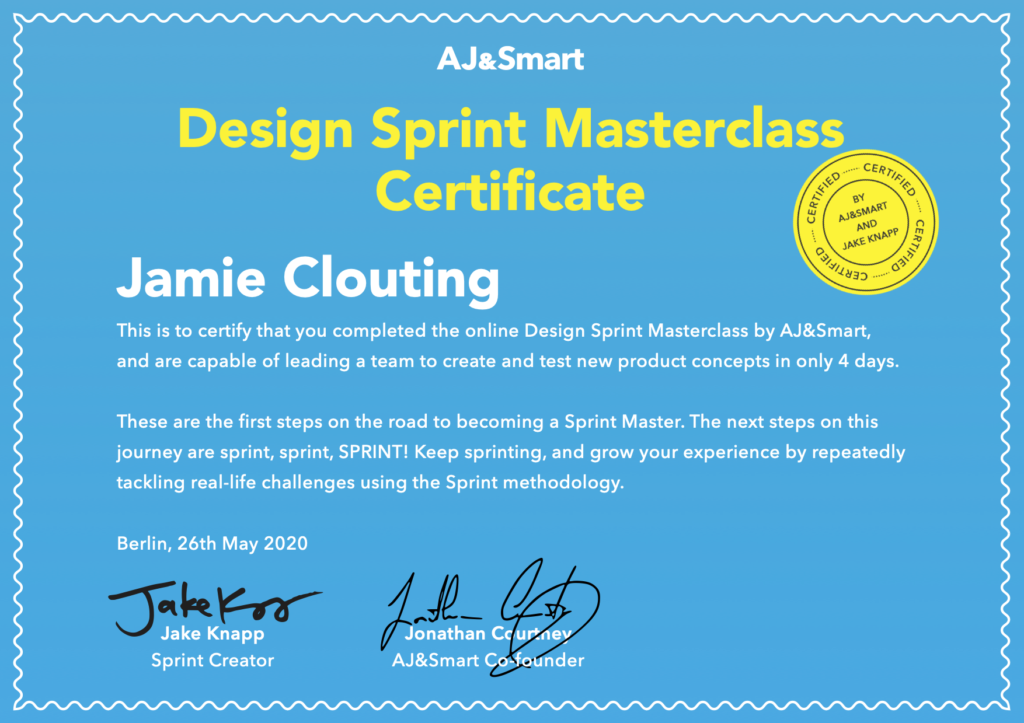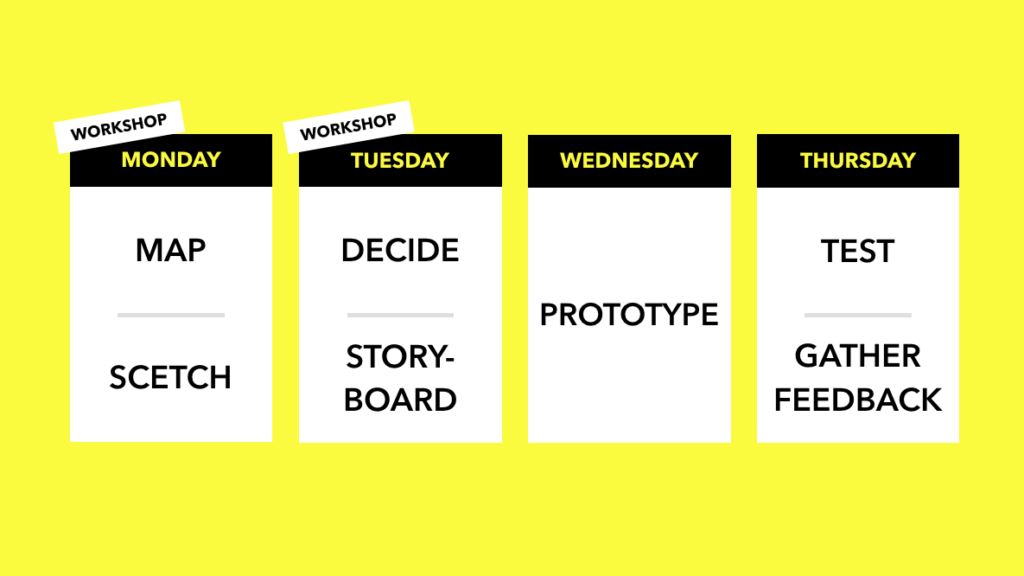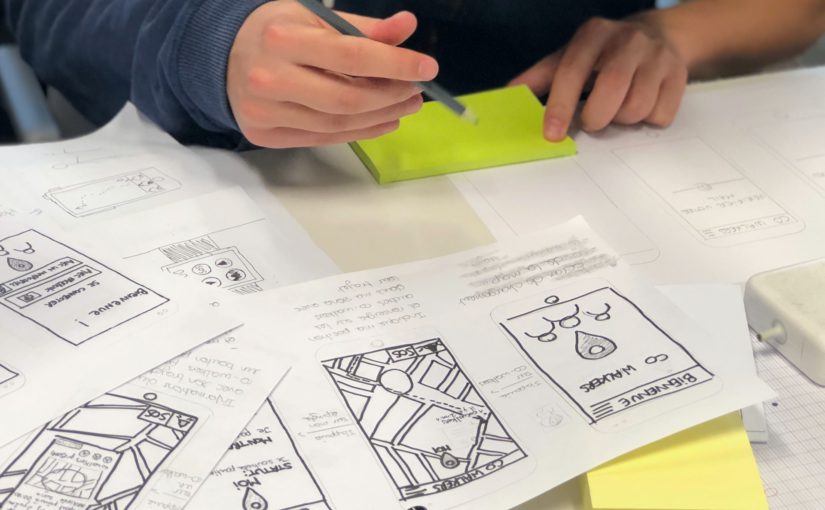I’ve recently completed the Design Sprint 2.0 Facilitators Masterclass, the most up-to-date and improved version of the Design Sprint developed by AJ&Smart and the original creator Jake Knapp.

The Design sprint is a four-day workshop process for answering critical business questions through design, prototyping, and testing ideas with customers. Developed at Google Ventures, and largely credited to Jake Knapp who authored the book “Sprint” in 2016.
In the book Knapp emphasises that he applies design philosophy, thinking, and approaches to solve various organisational challenges such as the launch of new products or features, growth, improvement of internal processes, innovation, and development.
Combining the best practices of Design Thinking, Lean UX, and Agile Knapp created a clear, efficient, rapid, and adaptable framework to reduce risks of innovation, align teams on the same vision, and eventually save money and time.
Design Sprint 2.0
There are a number of changes in the 2.0 version of the design sprint that make it more efficient and flexible, allowing you to achieve the same outcomes in less time.
The Sprint takes 4 days. Originally it was 5. This became possible by improving the general flow with some new elements (User Test Flow), changing the order of exercises (starting with Expert Interviews) and their structure (Mapping the System). This is really helpful for those that deliver sprints to customers, as Friday can be used as a write-up day.

Senior stakeholders are involved for just 2 days. In the first version of the Sprint your ‘Decider’ (CEO, senior executive, director) was required for the entire duration of the Design Sprint. This was a serious bottleneck as often executives weren’t able to clear their schedule. In Design Sprint 2.0 you can leave the last two days to the designers and interviewers and let the CEO and management go. They will receive the report with all the insights afterward.
Expanded organisational focus. The initial version of the Sprint was very much focused on delivery benefits to tech start-ups. However, Design Sprint 2.0 expands this framework making it accessible and relevant to large and small businesses across different sectors, not for profits, government departments, and NGOs.
What next?
I’ve already delivered my first Design Sprint and have supported the delivery of some great remote sessions, while not working in the office. I’m looking forward to sharing more about them in the coming months.
Featured photo by Amélie Mourichon on Unsplash
